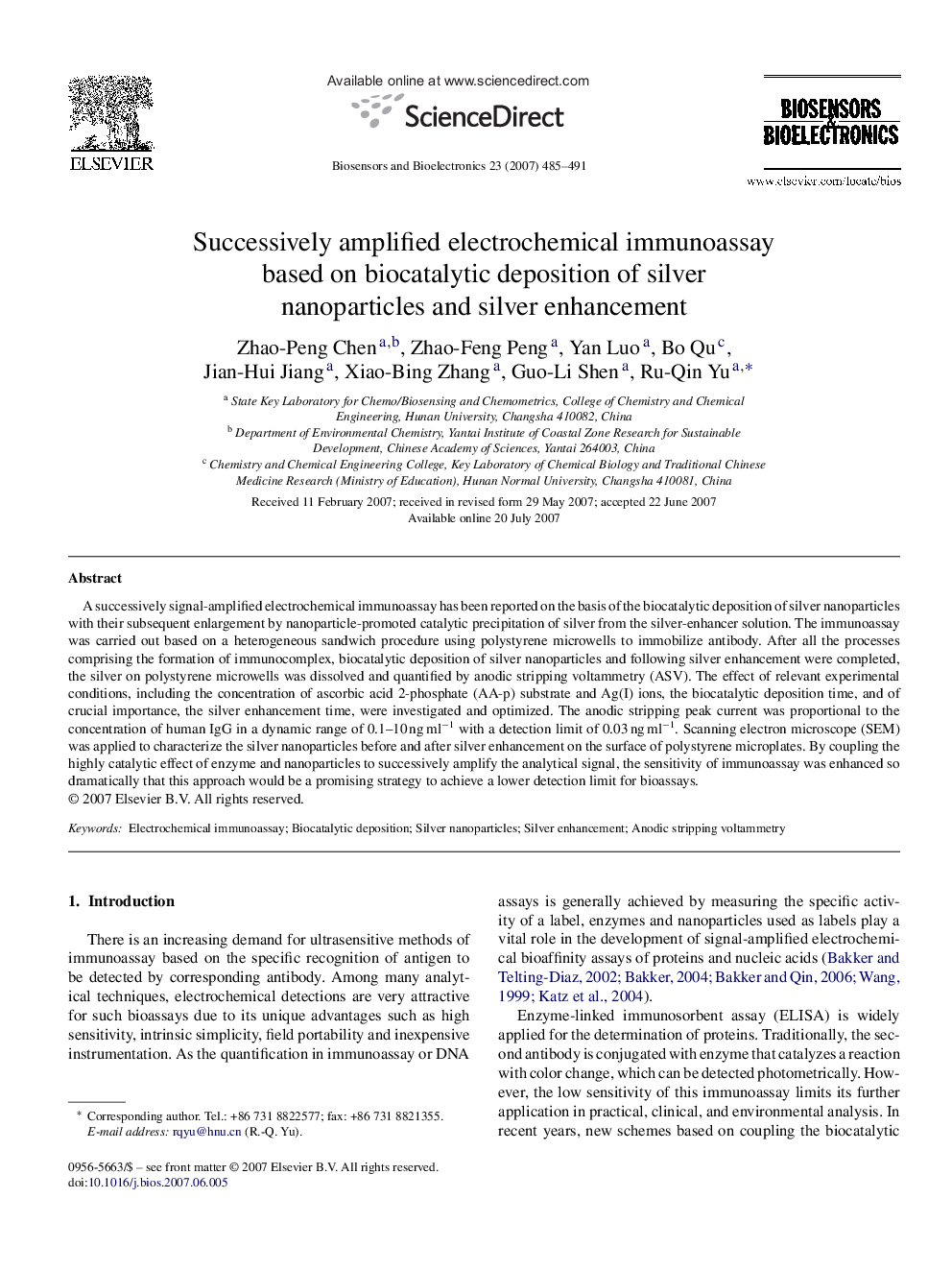| Article ID | Journal | Published Year | Pages | File Type |
|---|---|---|---|---|
| 869812 | Biosensors and Bioelectronics | 2007 | 7 Pages |
A successively signal-amplified electrochemical immunoassay has been reported on the basis of the biocatalytic deposition of silver nanoparticles with their subsequent enlargement by nanoparticle-promoted catalytic precipitation of silver from the silver-enhancer solution. The immunoassay was carried out based on a heterogeneous sandwich procedure using polystyrene microwells to immobilize antibody. After all the processes comprising the formation of immunocomplex, biocatalytic deposition of silver nanoparticles and following silver enhancement were completed, the silver on polystyrene microwells was dissolved and quantified by anodic stripping voltammetry (ASV). The effect of relevant experimental conditions, including the concentration of ascorbic acid 2-phosphate (AA-p) substrate and Ag(I) ions, the biocatalytic deposition time, and of crucial importance, the silver enhancement time, were investigated and optimized. The anodic stripping peak current was proportional to the concentration of human IgG in a dynamic range of 0.1–10 ng ml−1 with a detection limit of 0.03 ng ml−1. Scanning electron microscope (SEM) was applied to characterize the silver nanoparticles before and after silver enhancement on the surface of polystyrene microplates. By coupling the highly catalytic effect of enzyme and nanoparticles to successively amplify the analytical signal, the sensitivity of immunoassay was enhanced so dramatically that this approach would be a promising strategy to achieve a lower detection limit for bioassays.
